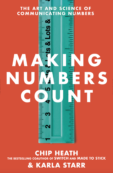
The folks at Brains on Fire, an agency that specializes in creating movements, have just published a smart new book called Brains on Fire: Igniting Powerful, Sustainable, Word of Mouth Movements. To celebrate that, here are 3 questions for BoF “Courageous President” Robbin Phillips:
Q1: All marketers are trying to do something to rally passion around their products or services. What’s the #1 thing you see marketers doing wrong in pursuit of that goal?
The mistake I see most marketers making is focusing on the wrong things.
Frankly I am not sure the word passion is on the minds of most marketers. And it should be. Often they’re more concerned with creating a product conversation vs. supporting a passion conversation.
The shiny new technology tools in the room are also a huge distraction. Chris Sandoval, a technology expert with a large company says in an interview. “When it comes to technology, what’s exciting and shiny today will be frickin’ dead tomorrow.” If you find yourself in a room talking about your twitter strategy, start over.
When it comes to igniting movements (as opposed to creating campaigns), we won’t get anywhere until we stop focusing on ourselves (or technology) and focus on the people we went into business to serve in the first place.
It’s about people.
Q2: Are there some products or services that are passion-proof? I.e., have you ever had to tell a customer, “I’m sorry but there is not much we can do to build a movement around your Xtra-Klingee Kling-Wrap.”
First of all, if Xtra-Klingee Kling-Wrap is a horrible product, no amount of marketing is going to build long term success. But if it’s really awesome Kling-Wrap, well then we’ve got something to work with. Because it can make people’s lives better.
Your question actually illustrates the problem we see most marketers struggling with. Igniting movements is about the passion conversation, not the product conversation. It is the foundation of all that we have learned. I’m certain you can’t create a movement around scissors or checking accounts or Xtra-Klingee Klingwrap. Real people don’t sit around and talk about Kling-Wrap unless it is extremely remarkable and disruptive. So we have to stop thinking about the product first. And instead start looking for the authentic passion and people behind the product, like scrapbooking, creating a simple financial life, or packing sandwiches with love.
It’s about people.
Q3: One thing I admire about you guys at Brains is that you use your talents to fight for things that matter — for instance, your work sparking movements to fight teen smoking and sexual trafficking. It must be difficult to balance business imperatives with, for lack of a better phrase, soul imperatives. Any advice for others who are struggling to find that elusive equilibrium?
One of my favorite lessons is the bonus lesson at the very end of the book:
Movements fight an injustice.
Injustice is easy to spot in cases like Love146, where the horrors of child sex-slavery are obvious. For businesses it’s likely there, but has to be first found and then defined. For Fiskars, fighting injustice meant putting a stop to personal attacks on other’s work in online scrapbooking forums. The Fiskateers set out to change the negativity and ignite a movement to celebrate all levels of crafting by creating a safe place to share.
So, my advice — dig deep, find the injustice in your industry and blaze a trail to save the day. People want to be a part of something bigger than themselves. Most of us want to get up in the morning and make the world we live in a better place.
And after all, it really is all about people.




